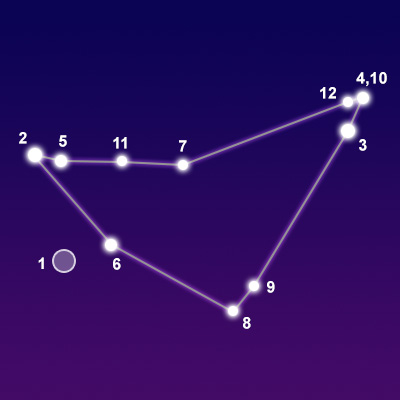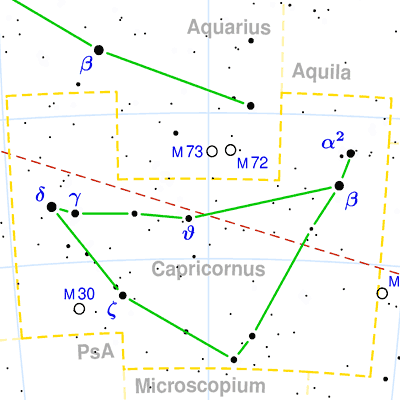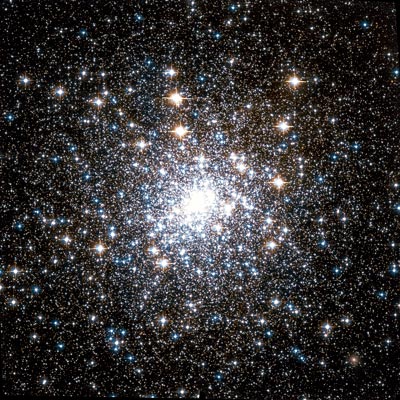Pronunciation:
(KAP-ri-KOR-nus)Abbreviation:
CapGenitive:
CapricorniRight Ascension:
21 hoursDeclination:
-20 degreesArea in Square Degrees:
414Crosses Meridian:
9 PM, September 20Visible Between Latitudes:
60 and -90 degreesThe constellation Capricornus, the sea goat, can be seen in the northern hemisphere in early autumn. It is visible between latitudes of 60 degrees and -90 degrees. It is a medium-sized constellation, occupying 414 square degrees of the sky. This ranks it 40th in size among the 88 constellations in the night sky. It is bordered by Aquila, Sagittarius, Microscopium, Piscis Austrinus, and Aquarius. It is one of the 13 constellations of the zodiac. This means that it lies along the path the Sun travels in the sky during the year.
Capricornus is one of the 48 constellations listed by the Greek astronomer Ptolemy in the second century. Its name means “the goat” in Latin, and it is represented as a goat with the tail of a fish. This ancient constellation has been known since Babylonian and Sumerian times. The Sumerians knew it as the goat-fish. It marked the winter solstice during the early Bronze Age. The ancient Greeks associated the constellation with Amalthea, the goat that sucked the baby Zeus from his mother, Rhea, and saved him from being eaten by his father, Cronos. It was also sometimes associated with Pan, the god with a goat’s head who saved himself from the monster Typhon by growing a fish tail and jumping into a river.

points of interest below © Sea and Sky

© Torsten Bronger CC BY-SA 3.0
Deneb Algedi
Dabih
Algiedi Secunda
Nashira
Yen
Dorsum
Omega Algiedi
Psi Capricorni
Algiedi Prima
Iota Capricorni
Alshat
"Tail of the Goat"
"The Butcher"
"Billy Goat"
"Field"
A Chinese State
"Back of the Goat"
"Belly of the Goat"
N/A
"Billy Goat"
N/A
"The Sheep"
Binary Star System
Multiple Star System
Yellow Giant Star
Blue-White Giant Star
Double Star
White Dwarf Star
Red Giant Star
Yellow-White Dwarf Star
Double Star
Yellow Giant Star
Binary Star System
2.91
3.05
3.58
3.67
3.77
4.08
4.12
4.13
4.27
4.28
4.77
Capricornus is a relatively faint constellation with only one star brighter than magnitude 3. In fact, it is the second faintest constellation in the sky. Deneb Algedi is the brightest star with a visual magnitude of only 2.91. It is a binary star system located 39 light years from Earth. Dabih is the second brightest star with a magnitude of 3.05. It is a multiple star system that lies 328 light years distant. At magnitude 3.85, Algiedi Secunda is the third brightest star. It forms a double star with Algiedi Prima. The two stars are separated by only 0.11 degrees in the sky.
Capricornus contains one Messier object. M30 is a globular star cluster that contains over 100,000 stars. It is located about 30,000 light years from Earth and is over 90 light years across. It was one of the first objects discovered by French astronomer Charles Messier as he compiled his catalog of nebulous objects. Capricornus also contains a number of dim deep-sky objects, including galaxies and star clusters. However, these can only be seen in large telescopes.

Hubble Space Telescope



